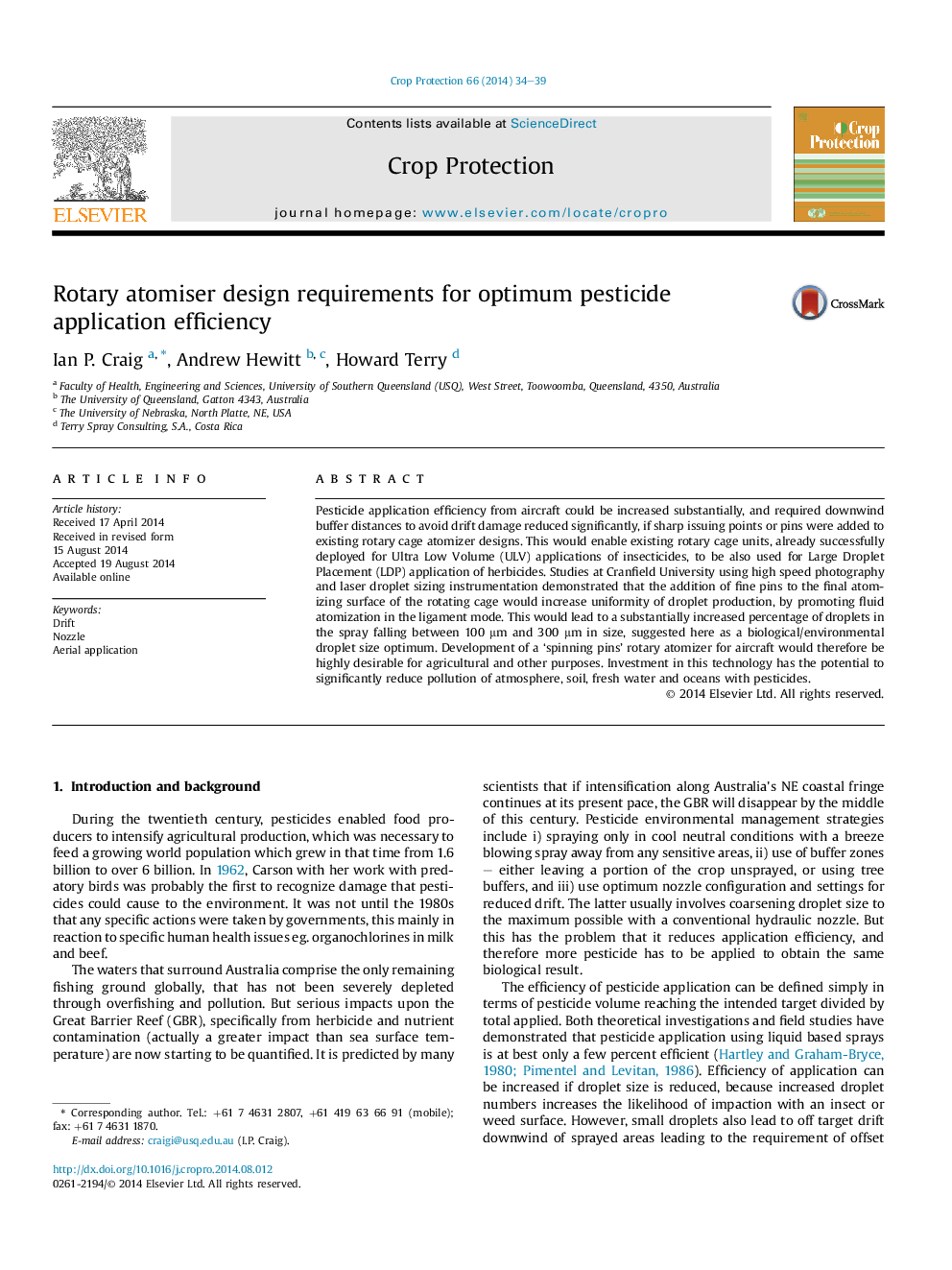| Article ID | Journal | Published Year | Pages | File Type |
|---|---|---|---|---|
| 6373693 | Crop Protection | 2014 | 6 Pages |
Abstract
Pesticide application efficiency from aircraft could be increased substantially, and required downwind buffer distances to avoid drift damage reduced significantly, if sharp issuing points or pins were added to existing rotary cage atomizer designs. This would enable existing rotary cage units, already successfully deployed for Ultra Low Volume (ULV) applications of insecticides, to be also used for Large Droplet Placement (LDP) application of herbicides. Studies at Cranfield University using high speed photography and laser droplet sizing instrumentation demonstrated that the addition of fine pins to the final atomizing surface of the rotating cage would increase uniformity of droplet production, by promoting fluid atomization in the ligament mode. This would lead to a substantially increased percentage of droplets in the spray falling between 100 μm and 300 μm in size, suggested here as a biological/environmental droplet size optimum. Development of a 'spinning pins' rotary atomizer for aircraft would therefore be highly desirable for agricultural and other purposes. Investment in this technology has the potential to significantly reduce pollution of atmosphere, soil, fresh water and oceans with pesticides.
Keywords
Related Topics
Life Sciences
Agricultural and Biological Sciences
Agronomy and Crop Science
Authors
Ian P. Craig, Andrew Hewitt, Howard Terry,
